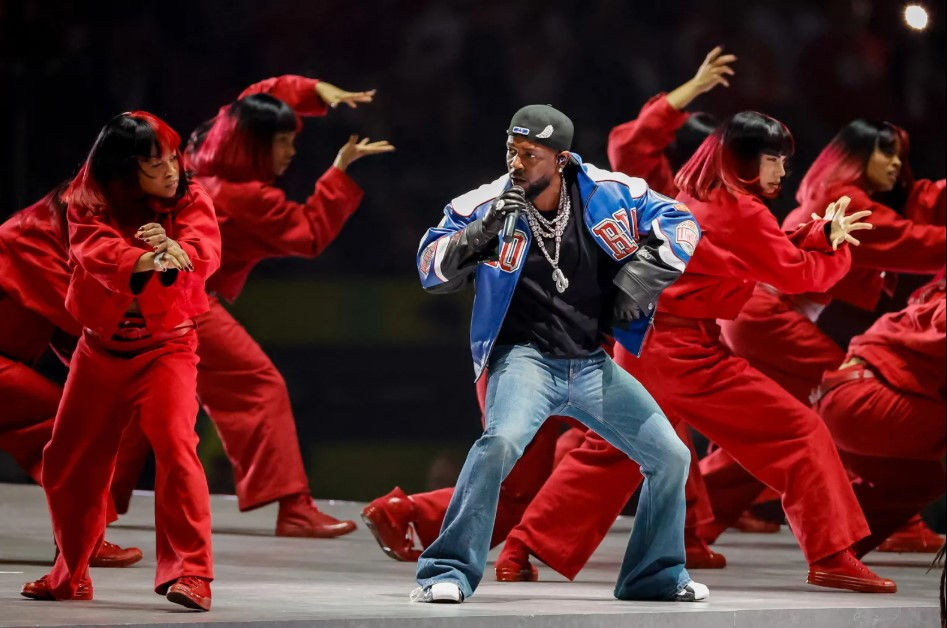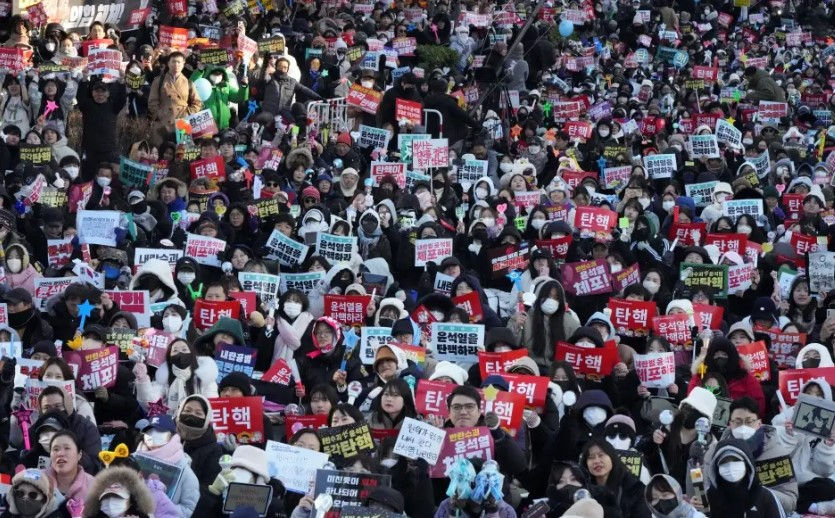Kendrick Lamar’s Halftime Show Was Radically Political, if You Knew Where to Look
- Wonjeong Hong
- Feb 18
- 4 min read
Source
Article Summary
Kendrick Lamar’s Halftime show, which 133.5 million people watched, brought political and cultural sensation through propulsive rap and protest art on TV. Various symbolisms and complexities hidden in the show added profoundness and depth to the performance.
The performance began with aerial shots of the darkened football field, illuminated by alternating square, triangle, and circle and X symbols from a popular South Korean Drama,” Squid Game,” which emphasizes the cruelty of humans in a materialistic and capitalist society through by depicting the people who play sadistic games only for money.
These references point to Lamar’s central message: the gamification of the elusive American dream. Before performing the Grammy-winning diss song “Not Like Us,” he develops the theme by mentioning “Forty Acres and a Mule,” the promise of the Confederates to the enslaved people during the Civil War era, written in Field Order No.15. This song indicates white hegemony in America.
Then, Samuel L. Jackson dressed up as Uncle Sam, a military recruitment propaganda character associated with patriotism. Throughout the performance, Samuel L. Jackson voices critiques and judgment toward Kendrick Lamar, sounding like an Uncle Tom from “Uncle Tom’s Cabin” at some point. He also admonishes and reprimands Kendrick Lamar’s performance, saying, “Too loud, too reckless, too ghetto.” These recall several injustices, such as the murder of 17-year-old Jordan Davis in 2012, shot and killed by a 45-year-old white man Jordan Davis after being called his “rap crap” was too loud. It also recalls Sandra, who was unfairly arrested for refusing to put away her phone during the traffic stop and killed in jail for being “too loud and too reckless,” according to the Texas Department of Public Saftey,
In the halftime show, Mr.Jackson’s character plays the high-status interlocutor, who is part of the minstrel and facilitates the dialogue between performers. Uncle Sam breaks the fourth wall for the people threatened and marginalized by the current administration. The various codes hidden throughout the show tell us how “Not Like Us” is not just a diss track toward Drake but also for the entire America.
The resonant image of the show is made with black dancers in the color of the American flag, red, blue, and white clothes, reminding the audience of the back that built this country against its will with Lamar in the center. Reframing the threat of the Black man in the hoodie through iconography shows how freedom can look, unlike the usual images of dead and exploited black people. Kendrick hints at the American symbolism of fearless Blackness.
Serena Willam’s appearance and ‘Crip walking’ was another significant moment of the show. She had experienced racist commentaries after doing Crip walk after celebrating her gold medal in the 2012 London Olympics. Why should we consider the comfort zone of those who do not value or recognize humanity when praising victory? Serena William answers these questions by showing her pure black joy and confidence through her dance in this half-time show.
Kendrick Lamar’s last action of telling us to turn off the TV echoes the declaration he made at the start of his performance: “The revolution ‘bout to be televised. You picked the right time, but the wrong guy.” which is an inversion to Gill Scott-Heron’s 1971 song “The Revolution Will Not Be Televised” which highlights “the disconnection between the consumerism celebrated on TV and the protests that are happening in the streets of America,” according to his biographer Marcus Baram. Kendrick Lamar flipped this message and ended the show with a wake-up call, saying that we have the controller, the tool for revolution and resistance, on our hands. Kendrick Lamar’s half-time show gives people the antidote to relieve stress from the current political situation after the inauguration.
Reflection
I was first introduced to Kendrick Lamar in 7th grade while exploring hip-hop and discovering artists like 2Pac, Eminem, and Dr. Dre. My first impression of Kendrick was his high musicality and artistry. Furthermore, unlike the current hip-hop scene, where a bunch of meaningless words such as lollipop fill the lyrics, Kendrick’s music contains deeper social and political context and reflection about the culture. What I especially admired about Kendrick was his firmness and strong faith.
Kendrick grew up in an underprivileged childhood, and he was homeless at some point. This led him to be close to the thug culture and gang community. However, after getting related to the gang fight despite his efforts to get away from that culture, he soon deeply got into the hedonistic gang culture of Compton. However, after getting advice from his dad, who was a gang member, to stay away from the community, he got farther from the unrestrained lifestyle. After the death of his friend when he was 16 years old, he converted to Christianity. He often faced seduction and temptation around him as his close friends were all associated with gangs, but he graduated from high school with a perfect A.
Kendrick’s complex background and life story add depth and meaning to his music. He discusses social issues, such as the discrimination, segregation, and violence that Black people are easily exposed to, and reveals the problems, division, and tragedy of the Black community and the Hood. Kendrick infuses his political opinions and insight regarding these issues into his music and delivers a message and reflection about how Black culture can be improved and improved.
Nevertheless, although he is called one of the most conscious and progressive artists of the 21st century, he is not free from the issue of misogyny that can be observed and found in his lyrics. For example, there is a verse in the track, ‘Fuckin’ Problem,’ where Kendrick talks about how he can always ‘Fuck’ women and will not date them unless they are pretty. These issues are instead rooted in the traditional hip-hop rules and lyrics where male rappers show off and express their power by abasing, objectifying, and belittling women rather than Kendrick’s problem. This aspect of Kenrick reveals that Kendrick is not a ‘perfect human being’ unlike most people who fantasize about him, especially after the beef with Drake, and he, as a human, still has part to improve.




Comments